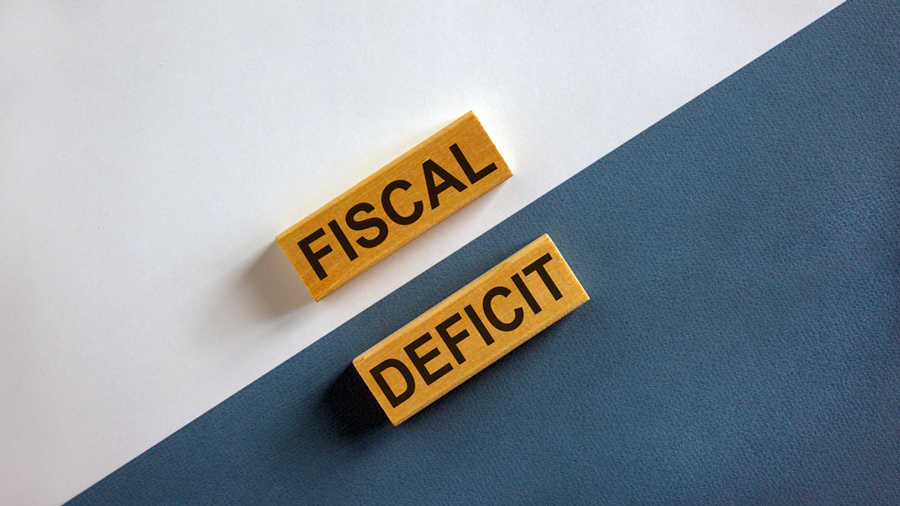The fiscal deficit for 2020-21 stood at 9.3 per cent of GDP, 0.2 per cent lower than the finance ministry’s revised estimate of 9.5 per cent of GDP.
In absolute terms, fiscal deficit stood at Rs 18.21 lakh crore. Revenue deficit during 2020-21 stood at Rs 14.54 lakh crore, or 7.42 per cent of GDP.
Madan Sabnavis, chief economist of Care Ratings, said: “Fiscal deficit is lower by Rs 27,000 crore compared with the revised estimate of FY21. Total revenue is higher by Rs 88,000 crore. Tax revenue has benefited from higher excise and customs collections. GST, income tax and corporate tax collections were lower. Non tax revenue was slightly lower while non-debt receipts were higher. Total expenditure was higher by around Rs 61,000 crore and interestingly capex was cut by Rs 14,000 crore.”
“For FY22, pressure will be there on tax revenue because of the lockdown, while non tax revenue will be higher because of the RBI transfer of Rs 99,000 crore this year. Expenditure control will be important,” he added.
“Although the government announced a stimulus package of more than 10 per cent of GDP in FY21, actual stimulus in FY21 budget has been Rs 4.69 lakh crore, 2.4 per cent of GDP. Higher expenditure contributed 45.7 per cent to fiscal deficit slippage followed by lower revenue receipts (37.9 per cent) and capital receipts (16.3 per cent),” Devendra Kumar Pant,chief economist, India Ratings, said.
Aditi Nayar, chief economist of ICRA, said: “There is a modest risk that the fiscal deficit in FY22 will be higher than budgeted (Rs 15.1 lakh crore), especially on account of shortfalls in divestment receipts, and higher-than budgeted expenditure. Accordingly, the space for a fiscal stimulus appears to be limited and would need to be carefully targeted.”
The fiscal deficit for 2020-21 stood at 9.3 per cent of GDP, 0.2 per cent lower than the finance ministry’s revised estimate of 9.5 per cent of GDP.
In absolute terms, fiscal deficit stood at Rs 18.21 lakh crore. Revenue deficit during 2020-21 stood at Rs 14.54 lakh crore, or 7.42 per cent of GDP.
Madan Sabnavis, chief economist of Care Ratings, said: “Fiscal deficit is lower by Rs 27,000 crore compared with the revised estimate of FY21. Total revenue is higher by Rs 88,000 crore. Tax revenue has benefited from higher excise and customs collections. GST, income tax and corporate tax collections were lower. Non tax revenue was slightly lower while non-debt receipts were higher. Total expenditure was higher by around Rs 61,000 crore and interestingly capex was cut by Rs 14,000 crore.”
“For FY22, pressure will be there on tax revenue because of the lockdown, while non tax revenue will be higher because of the RBI transfer of Rs 99,000 crore this year. Expenditure control will be important,” he added.
“Although the government announced a stimulus package of more than 10 per cent of GDP in FY21, actual stimulus in FY21 budget has been Rs 4.69 lakh crore, 2.4 per cent of GDP. Higher expenditure contributed 45.7 per cent to fiscal deficit slippage followed by lower revenue receipts (37.9 per cent) and capital receipts (16.3 per cent),” Devendra Kumar Pant,chief economist, India Ratings, said.
Aditi Nayar, chief economist of ICRA, said: “There is a modest risk that the fiscal deficit in FY22 will be higher than budgeted (Rs 15.1 lakh crore), especially on account of shortfalls in divestment receipts, and higher-than budgeted expenditure. Accordingly, the space for a fiscal stimulus appears to be limited and would need to be carefully targeted.”










